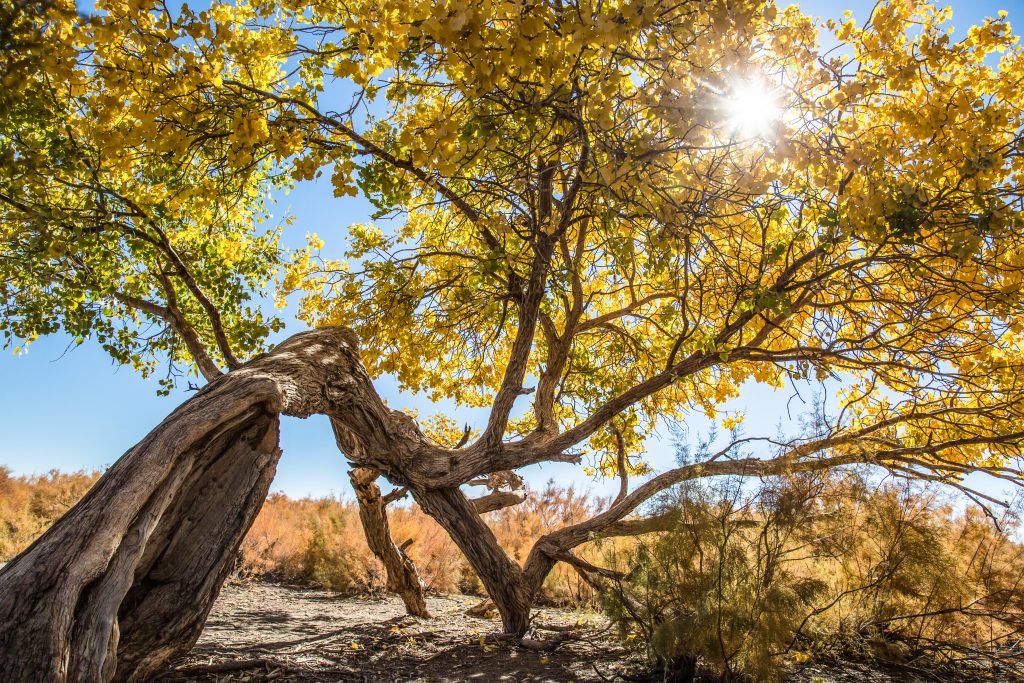Safely removing fallen trees is of paramount importance due to the potential hazards and risks they pose. Here are several key reasons highlighting the importance of safe fallen tree removal:

1. Personal Safety: The primary concern is the safety of individuals involved in the removal process, including homeowners, bystanders, and anyone assisting with the task. Improper handling of fallen trees can lead to serious injuries or fatalities.
2. Property Protection: Fallen trees can cause significant damage to property, including homes, vehicles, fences, and other structures. By removing them safely, you minimize the risk of further damage to your property and those of your neighbors.
3. Utility Lines: Fallen trees can bring down power lines, communication cables, and utility poles. This not only disrupts essential services but also poses electrocution and fire hazards. Safe removal helps avoid contact with live wires and reduces the risk of electrical accidents.
4. Environmental Impact: Removing fallen trees improperly can harm the environment. For instance, using improper cutting techniques or leaving debris scattered can damage vegetation, soil, and ecosystems. Safe removal ensures minimal environmental impact.
5. Preventing Secondary Damage: When a tree falls, it often creates a tangled mess of branches and debris. If not cleared properly, this debris can obstruct pathways, drainage systems, and access points, leading to further damage during rainstorms and inclement weather.
6. Mitigating Liability: Property owners have a legal responsibility to ensure their premises are safe. If a fallen tree on your property causes harm or damage to others, you could be held liable for negligence. Safe removal demonstrates your commitment to maintaining a safe environment.
7. Preserving Surrounding Trees: Incorrect removal methods can damage nearby trees and vegetation. When a fallen tree is removed safely, it minimizes the potential harm to neighboring trees and promotes the overall health of the ecosystem.
8. Emergency Access: Fallen trees can block roadways, driveways, and emergency access routes. Swift and safe removal helps ensure that emergency services can reach your location promptly when needed.
9. Professional Reputation: If you’re a professional in the field, such as a landscaper or arborist, practicing safe tree removal enhances your reputation and client trust. Clients appreciate professionals who prioritize safety and minimize potential damage.
10. Skill and Expertise: Removing fallen trees safely requires proper training, experience, and understanding of tree physics and cutting techniques. By employing these skills, you not only protect yourself and your property but also set an example for others in your community.

Removing a fallen tree can be hazardous due to various risks involved. Understanding these risks is crucial to ensure the safety of everyone involved in the removal process. Here are some potential risks and hazards associated with fallen tree removal:
1. Physical Injury: The process of cutting and removing a fallen tree involves the use of heavy equipment and tools such as chainsaws, axes, and ropes. Improper handling of these tools can lead to cuts, abrasions, and other injuries.
2. Falling Hazards: While working around a fallen tree, there’s a risk of branches, limbs, or even the entire tree itself falling unexpectedly. These falling objects can cause serious injuries to workers and bystanders.
3. Entanglement: Dealing with fallen trees often requires workers to navigate through tangled branches, vines, and other debris. This can lead to tripping, falling, or getting caught, potentially causing injuries.
4. Kickback: Chainsaws are commonly used for cutting fallen trees. Improper use of chainsaws can result in kickback, where the saw blade suddenly jumps back towards the user, causing severe injuries.
5. Electrocution: Fallen trees can bring down power lines, creating a risk of electrocution for anyone in the vicinity. Contact with live wires can be fatal.
6. Structural Damage: If the fallen tree is located near structures such as houses, fences, or utility poles, improper removal can lead to unintended damage to these structures.
7. Unstable Ground: The area around a fallen tree might have uneven terrain, holes, or hidden obstacles that can cause slips, trips, and falls.
8. Underlying Tension: Fallen trees can exert tension on surrounding trees, branches, and debris. Cutting the fallen tree without considering these tension points can lead to unexpected movements and hazards.
9. Lack of Proper Training: Without proper training and experience, individuals may not be aware of the correct cutting techniques, safety protocols, and potential risks involved in tree removal.
10. Inadequate Equipment: Using inappropriate or poorly maintained equipment can increase the risk of accidents. Chainsaws, ropes, and other tools need to be in good condition to ensure safe removal.
11. Limited Visibility: Working in densely vegetated areas or during adverse weather conditions can reduce visibility, making it difficult to assess potential hazards and properly execute cutting techniques.
12. Environmental Impact: Removing a fallen tree without considering the surrounding environment can lead to damage to other plants, soil, and wildlife habitats.
13. Lack of Communication: Inadequate communication among team members during the removal process can lead to confusion, coordination issues, and increased risks.
14. Fatigue and Stress: The physical and mental demands of fallen tree removal can lead to fatigue, reduced concentration, and increased likelihood of accidents.
15. Medical Emergencies: Working with tools and heavy equipment increases the risk of injuries that may require immediate medical attention.
Given these potential risks, it’s important to prioritize safety during fallen tree removal. Whenever possible, consult with trained professionals or arborists to ensure that the removal is conducted safely and effectively. Proper planning, the use of appropriate equipment, and adherence to safety protocols can significantly reduce the likelihood of accidents and injuries.
Certainly, let’s delve deeper into how to vividly assess the situation when dealing with a fallen tree:
1. Size, Weight, and Condition: When you approach the fallen tree, take a moment to gauge its size and weight. Stretch out your arms to estimate its length and width. If possible, use a measuring tape to get accurate dimensions. Notice any visible cracks, signs of decay, or weak points. A tree that appears healthy on the outside may have hidden issues.
2. Location and Surroundings: Stand back and observe the tree’s position. Is it leaning against another tree, lying across a path, or near structures? Note any structures, vehicles, power lines, or obstacles that could be affected during removal. Consider the tree’s direction of fall if it’s cut, and identify a clear path that avoids any potential hazards.
3. Potential Dangers: Look up to check for power lines above and around the tree. A fallen tree might have brought down power lines, creating a dangerous situation. Be aware of these lines and maintain a safe distance. Examine the fallen tree for any branches that might be under tension or pressure. These can unexpectedly snap or move during removal.
4. Level of Complexity: Consider whether the removal is straightforward or complex. A simple situation involves a tree that’s away from structures and power lines, and there are no major obstacles. A complex scenario might involve a large tree entangled in power lines or leaning against a building.
5. Equipment and Tools: Ensure you’re wearing the appropriate personal protective equipment (PPE) such as a hard hat, safety glasses, and gloves. Assess whether a chainsaw is needed to cut through the fallen tree. Check that the chainsaw is well-maintained and has a sharp chain. If rigging is necessary, make sure you have strong ropes and pulleys on hand.
6. Safety Considerations: Plan for emergencies. Identify clear escape routes that lead to safe zones away from the tree. Have a first aid kit readily accessible, and ensure you have a means of communication to contact emergency services if needed. This is especially crucial if you’re working in a remote area.
7. Bystander Safety: Mark out a safe perimeter around the work area using cones, tape, or caution signs. Ensure that bystanders, including pets, are kept a safe distance away from the tree. Communicate clearly with anyone in the vicinity about the potential risks and the need to stay back.
8. Decision on Removal Approach: Based on your assessment, decide whether you’re comfortable proceeding with the removal on your own. If you’re uncertain or if the situation seems complex, consider seeking professional help. Their expertise and specialized equipment can minimize risks.
9. Documentation: Take clear photos of the fallen tree from different angles. These photos can be valuable for planning, discussing with professionals, or documenting any damage caused by the tree.
10. Emergency Plan: Have emergency contact numbers stored in your phone or written down. Be prepared to call for help in case of accidents or unforeseen situations.
By vividly assessing the fallen tree and its surroundings, you’ll be able to make informed decisions that prioritize safety and enable a smoother removal process. Remember, when in doubt, it’s always wise to consult professionals who have experience in dealing with fallen trees and the associated risks.
Murray is a city situated on the Wasatch Front in the core of Salt Lake Valley in the U.S. state of Utah. Named for territorial governor Eli Murray, it is the state's fourteenth largest city. According to the 2020 census, Murray had a population of 50,637. Murray shares borders with Taylorsville, Holladay, South Salt Lake and West Jordan, Utah. Once teeming with heavy industry, Murray's industrial sector now has little trace and has been replaced by major mercantile sectors. Known for its central location in Salt Lake County, Murray has been called the Hub of Salt Lake County. Unlike most of its neighboring communities, Murray operates its own police, fire, power, water, library, and parks and recreation departments and has its own school district. While maintaining many of its own services, Murray has one of the lowest city tax rates in the state.
Murray Oakes, Grant Park, Southwood Park, Murray Park, Murray Park Restrooms, Willow Pond Park, Neighborhood Veterinary Care
We had a great experience with TruCo! They were well priced, responsive and prompt. Michael was a pleasure to work with and gave us advice on which plants to put in where we took out our ugly old shrubs. I would highly recommend this company!!!
TruCo Services gets 5 stars from us for customer service. We experienced a few issues with their services this last year and Rob Eccles in senior management, stepped in and immediately handled our issues. He was very committed to making sure they understood our expectations and would execute to make us happy.
I work for a property management company and have the pleasure of working with Rob at a community in Sandy. He has been incredible to work with and always responds in a timely manner. He knows all the homeowners by name and address and is aware of all the "problem" areas when it comes to sprinklers. I never have to worry about following up with him because he always reaches out to provide me with an update. If you're looking to work with someone who takes pride in their job, is professional, and can solve the worst landscaping problems thrown your way, Rob is your guy. Thank you, Rob for all you do!
We have used Truco at 2 of the complexes we manage, they have been great to work with. Good quality service, outstanding customer service with good communication. That's hard to find these days. I highly recommend them. Travis has been awesome to work with.
We use TruCo for a majority of our properties and our home. While other landscaping companies we use come and go for various reasons like cost, communication issues, work performance, etc., TruCo is always consistent in price and work. Also, Rob is the best.